Have you been thinking about your fitness goals recently? Maybe you want to reevaluate your plan and try something different? Why not try bulking and cutting? Many have found doing either, or a cycle of both, to help tremendously for muscle gain and fat loss. Keep reading to learn what a bulk and cut is, why you should try it, and how to do it.
WHAT IS BULKING AND CUTTING?
Bulking and cutting are two simple methods of reaching fitness goals. Bulking focuses on muscle growth, and cutting focuses on fat loss while maintaining muscle. Each involves a dialed-in nutrition and fitness plan.
While you can certainly focus on just bulking or just cutting to reach your fitness goals, most combine the two into a cycle to optimize muscle growth and fat loss to achieve a toned physique.
Here is a breakdown of the two:
BULKING VS CUTTING:
BULK
Goal: The primary goal of bulking is to gain muscle mass and size. This goal is achieved by promoting anabolism, facilitating contractile tissue growth (muscle tissue) in a caloric surplus.
Nutrition: During a bulking phase, individuals typically eat more food than usual to consume more calories than their body burns. This way of eating is called a caloric surplus, which provides your body with the extra energy it needs to build muscle tissue.
Training: Bulking prioritizes weightlifting and resistance training to stimulate muscle growth. Most opt for hypertrophy training, which slowly increases weights with each set, and each set has about 8-12 reps. Hypertrophy training is known to build muscle mass over muscle strength.
A Deeper Dive into Bulking
Common Concern: “Won’t I Just Gain a Lot of Fat?”
This is one of the most common fears when it comes to bulking, and it’s a valid concern. It’s important to understand that some fat gain during a bulk is inevitable. You are, after all, in a calorie surplus. However, the goal is to minimize fat gain while maximizing muscle growth. This is where a “clean bulk” comes in.
A clean bulk focuses on a moderate calorie surplus (around 200-400 calories above maintenance) and prioritizes nutrient-dense, whole foods. This is in contrast to a “dirty bulk,” where individuals eat anything and everything to hit a high calorie target, often leading to excessive and unnecessary fat gain. While a dirty bulk might seem like more fun, a controlled, clean bulk will make your subsequent cutting phase much easier and more effective.
Remember, the cutting phase is designed specifically to shed the fat you may have gained, revealing the new muscle you’ve worked so hard to build.
Tips for a Successful Bulk:
- Be Patient: Building quality muscle takes time. Don’t be discouraged if you don’t see dramatic changes overnight. Consistency is key.
- Track Your Progress: As mentioned earlier, tracking your calories is crucial. It’s also a good idea to monitor your body weight (aiming for that 0.25-0.5% increase per week) and take progress photos to see how your body is changing.
- Don’t Skip Your Veggies: While you’re in a calorie surplus, it can be tempting to fill up on high-calorie foods. But don’t forget to eat plenty of fruits and vegetables to ensure you’re getting the micronutrients your body needs to function optimally.
- Stay Hydrated: Water is essential for countless bodily processes, including muscle function and repair. Make sure you’re drinking enough water throughout the day.
- Listen to Your Body: Pay attention to your energy levels, hunger cues, and how you feel in the gym. If you’re feeling overly sluggish or gaining weight too quickly, you may need to adjust your calorie intake. Don’t be afraid to make small changes to your plan as you go.
CUT
Goal: The main goal of cutting is to reduce body fat while maintaining muscle mass or preserving contractile tissue through a caloric deficit. The process of your body breaking down fat to use as fuel is called fat oxidation.
Nutrition: During a cutting phase, individuals often follow a caloric deficit, consuming fewer calories than their body needs. In a caloric deficit, your body will use stored fat as energy. Since the goal is maintaining muscle mass, eating a lot of protein should be part of the nutrition plan.
Training: Focus on cardiovascular exercises helps burn additional calories for fat loss, while weight training maintains muscle mass. As with any fitness goal, listening to your body and knowing when too much is too much is vital. Overdoing any part of a bulk or cut can lead to injury. These fitness methods are meant to be sustainable. Also, pay close attention to your nutrition and training throughout the process to ensure you stay on track and achieve your desired results.
TERMS TO KNOW:
Anabolism – the set of metabolic processes in which the body builds larger and more complex molecules from smaller ones. This building typically requires energy input. Anabolism plays a crucial role in muscle growth, tissue repair, and new protein synthesis.
Contractile tissue – a type of body tissue that can contract, meaning it can shorten in length. Contractile tissue generates force and produces movement. There are two main types of contractile tissues in the human body: muscle tissue and certain types of connective tissue. Skeletal muscle tissue, specifically, is attached to bones and is responsible for voluntary movements, such as walking, jumping, and lifting weights.
Fat oxidation – the process by which the body breaks down fat molecules and uses them as energy sources. Fat oxidation typically happens during low-intensity, long-duration exercise (such as walking or jogging) and during rest or low-energy-demand situations. Fat becomes a significant energy source when glycogen (stored carbohydrates) levels are depleted after high-intensity or long-endurance training.
Caloric surplus – consuming more calories than your daily caloric expenditure. This excess gives your body more energy to build muscle tissue, and the excess energy is stored in the form of body fat. A caloric surplus is commonly used in muscle building (bulking). When the body receives more calories than it needs for maintenance and daily activities, surplus energy can be used to support the process of muscle protein synthesis, increasing muscle mass. It’s crucial to approach a caloric surplus with a balance of macronutrients and monitor progress to ensure that weight gain occurs at a reasonable and sustainable rate.
Caloric deficit – consuming fewer calories than your body expends or burns over a period. This deficit of calories leads to weight loss, as the body utilizes stored energy, primarily in body fat, to meet its energy needs. Maintaining an adequate intake of essential nutrients, particularly protein, is vital to preserve muscle mass during weight loss. Rapid and extreme caloric restriction may lead to muscle loss and other health issues. A gradual and sustainable approach to creating a caloric deficit is best for long-term success.
WHY SHOULD YOU BULK OR CUT?
Bulking phases should be implemented when the desired goal is building new muscle. This phase can also benefit those who have been dieting for too long and, as a byproduct, have decreased metabolic efficiency (decreased their metabolism). So, by increasing overall calories while prioritizing protein, we can adapt metabolically to the surplus (increase resting metabolic rate [RMR] and encourage muscle protein synthesis). This bulk is also great for your HPT and HPG axis. The HPT (Hypothalamus-Pituitary-Thyroid) axis and the HPG (Hypothalamus-Pituitary-Gonadal) axis (Hormonal and thyroid systems) work together to balance hormones.
Cutting should be implemented when the goal is fat oxidation (fat loss) while preserving or increasing lean muscle mass. This strategy can result in a more defined muscle tone. When done progressively and safely, a cutting phase can also help with insulin resistance, digestion, and overall health marks, like reducing the risk of obesity-related conditions. The key is not cutting back on protein consumption and keeping the diet nutrient-rich.
Why Do People Choose to Bulk and Cut?
The decision to start a bulking and cutting cycle is a personal one, and it’s not just for competitive bodybuilders. Many people in the gym choose this structured approach for a variety of reasons, all aimed at achieving their specific fitness goals. If you’ve ever wondered why someone would intentionally gain weight, only to then focus on losing it, here are some of the common motivations:
- Breaking Through a Plateau: Have you ever felt stuck in your training, where you’re no longer getting stronger or seeing changes in the mirror? A dedicated bulking phase can provide the extra energy and stimulus your body needs to break through that plateau and start making progress again.
- Maximizing Muscle Growth: For those whose primary goal is to build as much muscle as possible, bulking is the most efficient way to do it. The calorie surplus provides your body with the necessary fuel to repair and build new muscle tissue at an optimal rate.
- Working Towards a Specific Aesthetic Goal: Many people use a bulk and cut cycle to prepare for a specific event, like a wedding, vacation, or photoshoot. The bulking phase builds the muscle, and the cutting phase reveals it, resulting in a lean and defined physique.
- Improving Athletic Performance: For some athletes, a well-planned bulk can lead to increased strength and power, which translates to better performance in their sport. This is often followed by a cut to get back to a specific weight class or to optimize their power-to-weight ratio.
- The Power of a Structured Plan: Some people simply thrive on having a clear, structured plan to follow. Bulking and cutting provides measurable goals (calorie targets, weight gain/loss) that can keep you motivated and focused on your fitness journey.
Ultimately, choosing to bulk and cut is about taking control of your body composition in a deliberate and strategic way. It’s a powerful tool that, when used correctly, can help you achieve results that might not be possible with a less structured approach.
HOW TO CREATE YOUR OWN BULKING AND CUTTING PLAN
Start Tracking Your Calories: No matter the goal, you must start by tracking your current daily caloric intake. After tracking intake for at least a week, take note of your average daily calorie consumption. If you have maintained your weight during the week, we know this is close to your TDEE (total daily energy expenditure or maintenance). This number of calories is your baseline to determine how much to consume for bulking or cutting.
BULKING PHASE PLAN:
- If you are entering a bulking phase, increase your daily caloric intake by no more than 250-300 calories. Take it slow. If we add unwanted fat, we will have to work harder later to burn that excess tissue off. Ensure you eat enough protein so your body has what it needs to build muscle tissue. In terms of grams, keep protein around .9 to 1.1 grams per pound of body weight. So, if you are 150 pounds, you’ll need 135 to 165 grams of protein per day.
- For training, focus on weight lifting and strength training exercises. Try to train a minimum of three times a week. To increase muscle mass over muscle strength, focus on hypertrophy training, which incrementally increases weight with each set. In general, aim for six to eight exercises per session, three sets per exercise, and eight to twelve reps per set. The last rep on the last set should be close to failure. Lastly, try to increase weight each week.
- Reassess every couple of weeks to see if you need to make any changes. Do this for about two to three months or until your body fat percentage is around 18% for men and 28% for women. Then, you may choose to maintain or to cut.
CUTTING PHASE PLAN:
- If you are entering a cutting phase, start by decreasing your daily intake by 250-300 calories. But don’t decrease your protein intake to ensure you don’t lose muscle mass. High protein also helps with satiety. Again, keep protein around .9 to 1.1 grams per pound of body weight. So, someone weighing 150 pounds will need 135 to 165 grams of protein daily, roughly 50 grams per meal. Follow this for 14-21 days and then reassess. Try to make adjustments by only 100-200 calories. Many decrease by extreme amounts right away, and this higher amount of stress can cause a quicker adaptation by the HPT axis, making it harder to lose fat over time. Slow and steady is always best.
- Next, create a training plan focused on aerobic activity, like running, cycling, HIIT, etc. Add in a day of strength training to maintain lean muscle. Train for at least 30 minutes three days a week. If you’re new to working out, you can start there, but those who are more advanced should aim for longer workout times more often. Try to track how many calories you burn and subtract this from your daily calorie intake.
- Reassess every couple of weeks to see if you need to make any changes. Do this for about two to three months or until your body fat percentage is around 13% for men and 23% for women. Then, you may choose to maintain or do a bulking phase.
START YOUR BULK OR CUT TODAY
A bulk or cut can be overwhelming for some. It can be a lot of guess work for someone new to muscle gain or fat loss. For best results in bulking and cutting, consult with a personal trainer. They can give you a more precise workout and nutrition plan based on your current body composition, age, weight, and goals. If you want to reach your fitness goals through bulking or cutting, contact an experienced personal trainer at a Carbon Performance location near you today!





